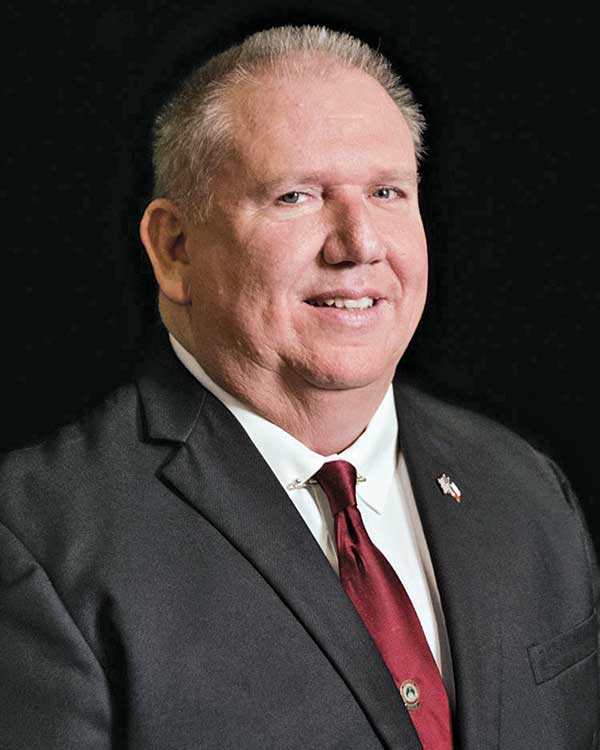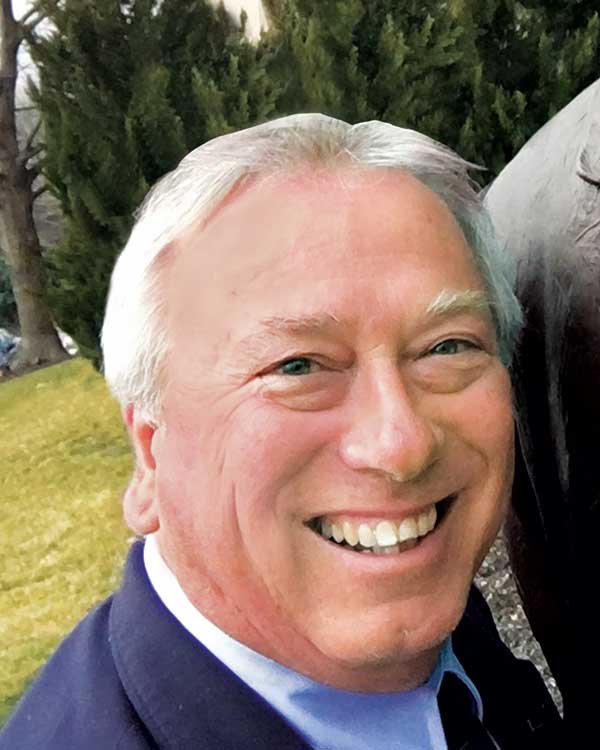2021 State of the Industry: No new normal

Anthony Williams, CGCS (Photo: Anthony Williams)
Anthony Williams, CGCS
President, North Texas GCSA
Director of Golf Course and Landscape Operations, TPC Four Seasons Golf and Sports Club, Dallas at Las Colinas
How was golf season for your year?
Rounds were up. One of the big things this year was an epic winter storm in February. There was a significant loss of some turf but a lot of trees and shrubs. It was an unprecedented agronomic loss. So, everyone started the 2021 season thinking, COVID is kind of behind us but it’s still lingering, and while we all experienced more rounds, the recovery lasted throughout the season and will likely impact us next year. There’s still a lot of large trees that are damaged. Nursery stock, shrubbery, flowers — we all lost a lot of product and prices were up and expectations were the same. We were dealing with the weather event on the tail end of a pandemic with record rounds. We tried to put in a recommendation for early and constant communication. We gave our members tools to engage the stakeholders, everyone from greens committees to random golfers to owners. A big push for us educationally and for the greater good was to make sure everyone understood it wasn’t just one golf course, but the brotherhood of superintendents rose up, and everyone was working together to help everyone find the resources needed. The supply chain issue also came along later in the season. You just couldn’t get replacement parts. Even if you ordered new equipment, it was delayed because of the lack of microchips or the lack of inventory in general. That was a sneaky impact from COVID where a lot of manufacturing and shipping was impacted by the closures. None of us recognized the impact that would have. Add with that the rising cost of fuel, everything we did was more expensive, so it was about being able to communicate all that as quickly as possible so you could adjust. The good news is rounds were significantly up, so revenue was also up.
How has the weather been?
It was bearable, but North Texas is famous for weather extremes. The week of the storm — the Valentine’s Day storm — it was minus 2 degrees that Wednesday, and by the next week, we had a warm front that brought 3 inches of rain and heavy lightning and a high of 82 degrees, so within a week, we had a temperature swing of 80 degrees. I’ve seen a lot of weather events, both from the cold side and all the way through, but this impacted every piece of the golf course operation. The soils were so contracted with the bitter cold since it was below freezing for five days, but then they expanded so we saw concrete retaining walls fail because of the extreme. None of those things are free, and they all have to be done for the facility to function.
What was your experience like with labor this year?
It’s always tough to get people to show up at 4:30 in the morning, especially at the entry level. This was the worst year in history because a lot of people were not wanting to come back to work. We were competing with construction and restaurants. There was a lot more work to be done than people to do it. We were doing flex scheduling. We tried to commit to our core group, which voted during COVID to not furlough anyone from maintenance. Everyone took fewer hours so we could keep the full crew, and then everyone came back as things improved. That helped initially, but a lot of courses struggled because the labor pool had dried up. The guys that did work were working more hours, which puts more pressure on them. The guys got creative with chemistries, so plant growth regulator sales were up because if we weren’t restricting growth in the fairways, we weren’t able to keep up. Everyone had to be almost perfect with all of the programs to create labor savings and constantly think of ways to cast a bigger net to find the labor that is out there. I think that will be the same for the foreseeable future. We were able to get some interns, and if we hadn’t been so vigilant of turning over every stone, I don’t know that we would have survived, and not every golf course in North Texas can say that.
Were there notable success stories from your area/chapter this year?
Everywhere, the resilience to take that winter storm right out of the gate and then dealing with North Texas summers with heat indexes of 106, 107. Even the ones who struggled a bit, everyone made more money than the year before it seems. I could give you individual stories of success, but I think overwhelmingly, it was the way the superintendents of North Texas came together. When the world was absolutely at its worst, our crew members were at their best. When I look back on the last two years, it’s a testament to the dedication of the men and women who do this for a living that despite all the negatives, they find the silver lining in it. It keeps all of us going, that desire to take responsibility. When a lot of people make excuses, our industry rose up and made the changes. You have to be impressed with the resilience of our industry over the last two years.
What are your expectations for 2022?
As COVID hit, we were in a race. And then, it became clear that that race was going to be a marathon. Now, I think it’s an ultramarathon. We’re still in the race, and we realize it’s not just 26.2 miles. We’ve got a lot of things ahead of us. We’re several years away from a shift. For 2022, you have to communicate more, be even more creative. As all the other industries raise their minimum pay, we’re going to have to at least match it. We’ll have to get creative with flex scheduling. We recruit a lot of younger folks and retirees as well. For a successful operation, all of that is not only going to be critical, it’ll be necessary going into 2022 and even 2023. Successful operations are the ones who can adapt and move quickly to address all the issues. Superintendents are going to need to put on a life coach hat and do some deeper work to keep these guys engaged and staying within the operation.
— S.W.
Scott Delpiere
Vice President, Southern Nevada GCSA
Superintendent, Cascata Golf Club, Boulder City, Nev.
How was the golf season in your region?
It’s been never-ending for us. All year, it’s been nonstop, even in the summer months when we usually slow down to just local traffic. With the cost of all of our essentials really high, keeping revenue going was really important. So, if people wanted to play, we’d just do whatever we could to follow behind them to treat areas. In the summer, the last tee time is 11:30 a.m. because it gets too hot to safely play in Las Vegas after that. So, crews often went out in the early afternoon to maintain areas, but the heat kept things challenging. This year was a mess. We had nematodes, and the moisture caused all sorts of problems. We had a lot of turf loss.
How was the weather in your area this year?
It was a miserable summer, hot and humid. Our monsoon season, when it gets really humid, is usually a month or a month-and-a-half. This year, it stretched on for two-and-a-half or three months. High humidity in Las Vegas is only about 30 percent, but couple that with 106-degree temperatures, and it feels worse than Florida in August.
How was your experience with labor this year?
We didn’t lose any employees. We ran short-staffed for a week or two in the summer, but that’s pretty typical. We increased wages and starting pay to keep everyone we could.
Existing workers got $3 to $3.50 raises, and starting wages went to about $15.50 from as low as $12 per hour. We really need assistants, and they have been really hard to find. We’ve had job listings starting at $65,000, and we haven’t gotten much interest.
Were there notable success stories from your area/chapter this year?
There weren’t a lot of things going right for us from the Fourth of July until we overseeded at the end of September.
What are your expectations for 2022?
I’m expecting more of the same, huge numbers of rounds played, higher starting wages and challenging weather. I hope that the labor market improves, but I expect higher wages to stick around. I don’t think golf is going to slow down here at all until July or August, and it might not even happen then. People really want to play golf in Vegas right now.
— R.S.
Paul Sibley
President, Rocky Mountain GCSA
Superintendent, Walnut Creek Golf Preserve, Westminster, Colo.
How was the golf season in your region?
Golf was through the roof. We had a huge surge of new golfers. We had a lot of returning golfers. It was huge; we’ll more than likely break round and revenue records for 2021. It’s hard to get a tee time here.
How was the weather in your area this year?
Springtime was pretty good. Being on the front range of Denver, we got a lot of heat, and it lasted longer than normal. Pretty much midway through June through August and September, we had record heat. Here we are in November, and we’re looking at 73 degrees — so it’s been warm.
How was your experience with labor this year?
Talking with the guys on the board, we’re all not getting the number (of workers) we’re used to and we’re barely scraping by. People are coming in wanting to be part time only. On average, we hire 25 people a season. This year, we had 18. I think wages need to improve, not just at my facility but industrywide. When you see fast food chains paying $16, $17 an hour to start, and we’re $14.50?
It’s a hard market. At the city I work for, they’re really looking into how we can become competitive in our local market. It still has to go through city council, but it looks like this coming season we’ll be $2 higher an hour than what we were this season. That should help.
Were there notable success stories from your area/chapter this year?
We held our third annual Rocky Mountain Superintendents Association Conference this year. Our conference committee and board of directors put a lot of time into making it a great show. We had a great slate of speakers from all over the country, including Matteo Serena, (Ph.D., UC Riverside) and Karl Danneberger (Ph.D., The Ohio State University). It was very diversified. For our board of directors, 2021 was a good year rebounding from what everyone went through in 2020. We really got innovative in our education. A lot of it is virtual now. We’re seeing a lot more participation. And we were able to recruit golf courses to allow us to do outings and education so we could get out and about and see each other again.
What are your expectations for 2022?
I think we’re going to surpass rounds and revenues again. Even coming into late fall, our tee sheets are still packed. I expect to see golf here along the front range and around the country to keep moving forward. Hopefully, it lasts a long time. I won’t say ‘on the downside,’ but I’m starting to experience an increase in the cost of the products that we buy. Fertilizer, chemical prices are going through the roof. It seems like everything, topdressing sand, there’s a 10 to 20 percent increase coming our way. I’m hoping the uptick will get some budgets moving in the right direction so we can keep providing good playing conditions on a daily basis.
— S. J.

Melvin Waldron III, CGCS (Photo: Melvin Waldron)
Melvin Waldron III, CGCS
Secretary/treasurer, Ozark Turf Association
Superintendent, Horton Smith GC, Springfield, Mo.
How was the golf season in your region?
Our state and our area had strong rounds again. Our rounds were solid, and weather for the most part was good. A few months were above average on rainfall, while a few months were below average. The wet months didn’t seem to hurt our rounds overall. I will say, a few courses did notice a slight drop in rounds this year compared to last when schools went into session in August. Some thought that slight drop might have been due to some events allowing more spectators and activities increased from last year, taking some of the rounds away.
How was the weather in your area this year?
We did have a couple of months that pretty wet, March, May and October, about double the amount of average rain, but rounds didn’t seem to suffer. March had temperatures way above average, while the rest of the golf season temperatures were average. We did suffer from the deep freeze in February but didn’t suffer any damage because of snow cover. I know October was wetter than normal, but September and August were drier than normal. I think a lot of temperatures were average. We haven’t hit 100 degrees since 2016, but we have had above monthly averages.
How was your experience with labor this year?
Everyone seemed to have trouble reaching the numbers of staffing that we have had in the past. Many guys did seem to notice that the staff that we did have — especially seasonal help — seemed to be overall more quality help compared to quantity. The one problem some superintendents had was losing longtime assistants to other green industries or trouble finding assistants.
Were there notable success stories from your area/chapter this year?
Our OTA member superintendents seemed to host more state golf association events, either that, or I just paid more attention this year. I covered many on our OTA website, OzarkTurf.org. Highland Springs Country Club hosted another Korn Ferry event, the Price Cutter Charity Championship, the 31st edition. It was one of the original stops when the tour first started as the Ben Hogan Tour. I believe that was 1990. Our course hosted the U.S. Speed Golf Championship, even having a world record set.
What are your expectations for 2022?
For 2022, everyone is expecting that rounds will continue to be strong, but there are some uncertainties as pay levels are going up, will it keep pace with costs. Projects seem to still be a go, as courses keep working on improvements to keep golfers engaged.
— C. H.











